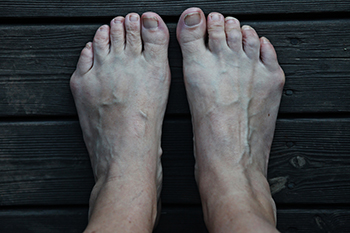
A bunionette, also known as a tailor’s bunion, is a bony prominence at the base of the little toe, often causing discomfort and redness due to friction with tight shoes. Similar to bunions, bunionettes result from pressure and can cause the little toe to bend inward. These bumps may start as painless but can grow to be painful over time, especially when wearing narrow footwear that compresses the forefoot. Contributing factors include wearing ill-fitting shoes as well as congenital foot structure abnormalities. While switching to shoes with a wider toe box can help to alleviate pain, persistent or severe cases might require more advanced measures. Non-surgical treatment often involves footwear modifications, padding, and the use of anti-inflammatory medication to manage symptoms. In cases where non-invasive measures are ineffective, surgery may be necessary to realign the affected bones. If you have foot pain related to a bunionette, it is suggested that you schedule an appointment with a podiatrist for evaluation and treatment.
If you are suffering from bunions, contact William Beaton, DPM of Advanced Podiatry and Wound Care. Our doctor can provide the care you need to keep you pain-free and on your feet.
What Is a Bunion?
A bunion is formed of swollen tissue or an enlargement of boney growth, usually located at the base joint of the toe that connects to the foot. The swelling occurs due to the bones in the big toe shifting inward, which impacts the other toes of the foot. This causes the area around the base of the big toe to become inflamed and painful.
Why Do Bunions Form?
Genetics – Susceptibility to bunions are often hereditary
Stress on the feet – Poorly fitted and uncomfortable footwear that places stress on feet, such as heels, can worsen existing bunions
How Are Bunions Diagnosed?
Doctors often perform two tests – blood tests and x-rays – when trying to diagnose bunions, especially in the early stages of development. Blood tests help determine if the foot pain is being caused by something else, such as arthritis, while x-rays provide a clear picture of your bone structure to your doctor.
How Are Bunions Treated?
- Refrain from wearing heels or similar shoes that cause discomfort
- Select wider shoes that can provide more comfort and reduce pain
- Anti-inflammatory and pain management drugs
- Orthotics or foot inserts
- Surgery
If you have any questions, please feel free to contact our office located in St. Petersburg, FL . We offer the newest diagnostic and treatment technologies for all your foot care needs.
